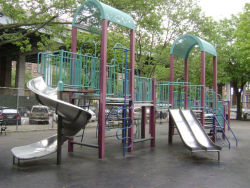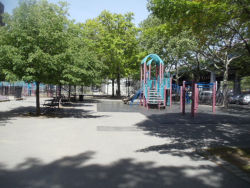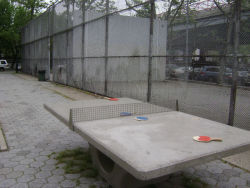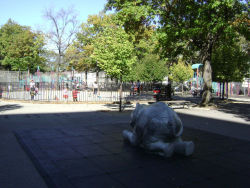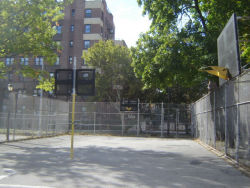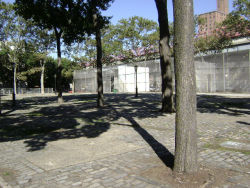Luther Gulick Park
Luther Gulick Playground
What was here before?
This was once the site of the printing press factory of R. Hoe and Company. Their main headquarters were here until it was demolished in the late 1920s.
How did this site become a playground?
This site was purchased by the City of New York in 1931 for purposes of a school but later transferred it to NYC Parks. It opened as Bernard Downing Playground in 1933 after a recently deceased minority leader of the New York State Senate.
This site is part of Parks' Community Parks Initiative, a multi-faceted program to invest in under-resourced public parks and increase the accessibility and quality of parks throughout the five boroughs. Through this program, Luther Gulick Playground received a new lawn area, refurbished basketball and handball courts, ping pong tables, exercise equipment, spray showers and sensory play areas in 2020.
Who is this playground named for?
In 1985, the playground was renamed to honor Luther Halsey Gulick, Jr. (1865-1918) and his nephew, Dr. Luther Halsey Gulick (1892-1993).
The elder Gulick was an educator, reformer, and community leader who is best remembered as the “Godfather of Basketball.” As a physical education director at the Springfield, Massachusetts Young Men’s Christian Association, he challenged colleague James Naismith in the autumn of 1891 to concoct a game that could be played indoors during the winter months. On December 21 of that year, Naismith presented Gulick with a soccer ball and two peach baskets, and the game of basketball was born. In 1959, Gulick was inducted into the Basketball Hall of Fame for his role as a “contributor” to the sport.
Gulick, whose belief in a trilogy of mind, body, and spirit inspired the YMCA’s inverted triangle design, vigorously promoted physical education in New York City public schools and supported the concept of city playgrounds. In 1903, he founded the Public School Athletic League to bring organized team sports to youths in New York City. In 1910, he and his wife Charlotte co-founded the Campfire Girls, an organization that extended to young women opportunities similar to those offered by the Boy Scouts, which had been formed one year earlier. This group was one of the first such organizations not affiliated with a religious institution and represented Gulick’s extensive and evenhanded interest in making outdoor and sporting pursuits available to all young people.
The younger Dr. Gulick shares the distinction of having this playground named for him. From 1921 to 1961, Dr. Gulick served as president of the Institute for Public Administration (IPA), the first American organization formed to promote scientific management of government. President Franklin Roosevelt appointed Dr. Gulick to serve on the Committee on Administrative Management, a three-member advisory board that convened in 1936 and 1937 to reorganize the executive branch of the Federal Government. In addition to advising President Roosevelt and two New York City mayors, Dr. Gulick taught for eleven years at Columbia University, his alma mater. The IPA has established the title Luther Gulick Scholar in Residence to honor distinguished associates of the Institute.
Check out your park's Vital Signs
Clean & Safe
Green & Resilient
Empowered & Engaged Users
Share your feedback or learn more about how this park is part of a
Vital Park System

